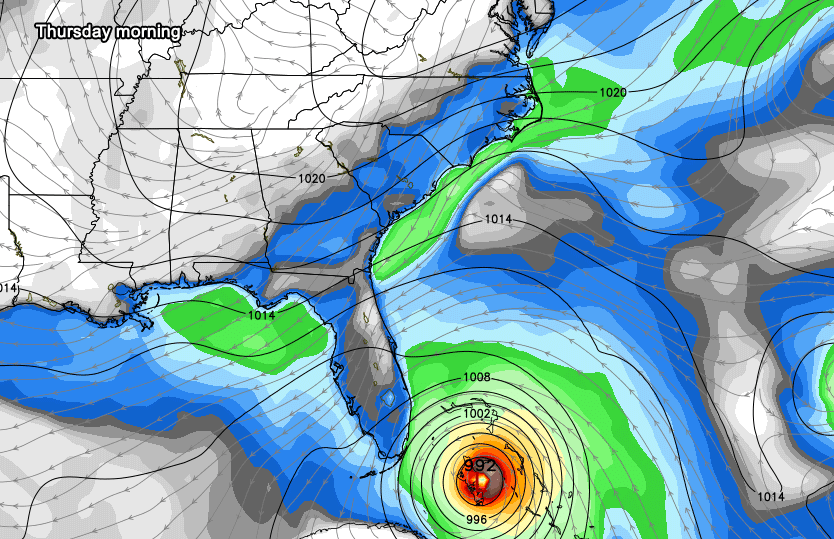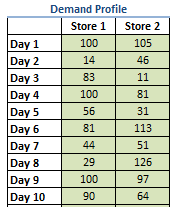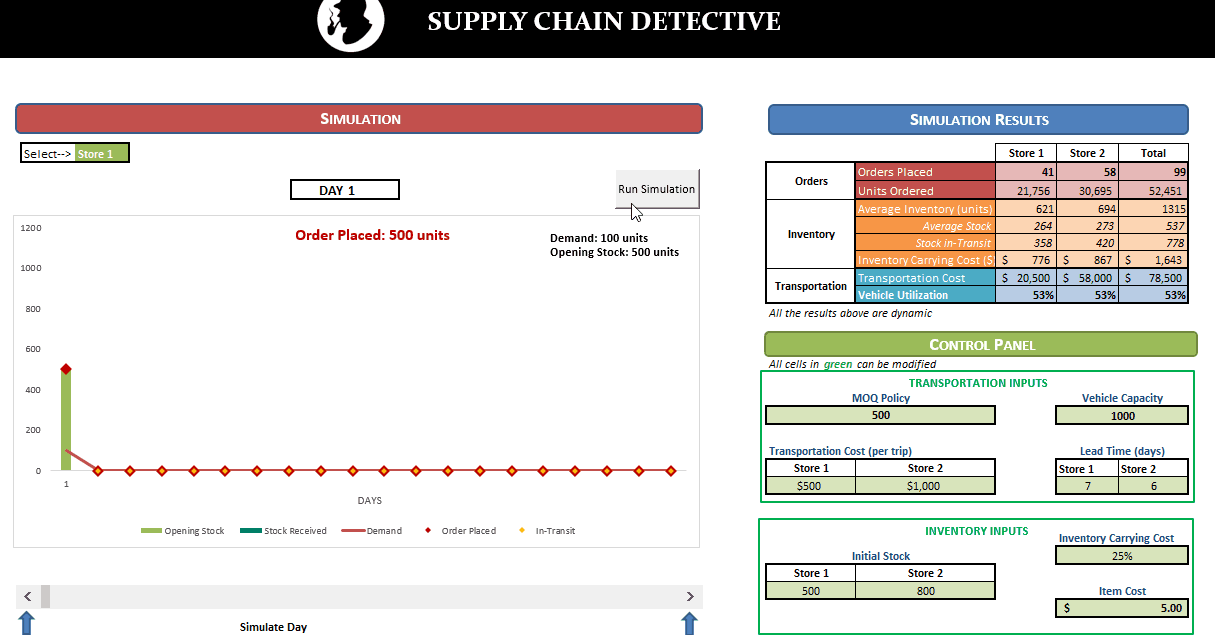 Whenever you pick-up that joystick for shooting aliens, running through cross-dimensional portals or hopping Italian plumbers through the obstacles to save make-believe princesses, you are running a simulation. Examples of simulations go well beyond video games – armies across the world use simulation to train their soldiers; trainee pilots are first put on flying simulators and some people even believe that our entire Universe is a simulation.
Whenever you pick-up that joystick for shooting aliens, running through cross-dimensional portals or hopping Italian plumbers through the obstacles to save make-believe princesses, you are running a simulation. Examples of simulations go well beyond video games – armies across the world use simulation to train their soldiers; trainee pilots are first put on flying simulators and some people even believe that our entire Universe is a simulation.
But what is a simulation?
If you open a book you will see a definition of simulation something like:
"Simulation is an imitation of a closed system over time under pre-defined rules."
...at which point you’ll promptly close that book and go back to shooting aliens.
At SCD we like to define simulation as –
" Modeling some crazy and not-so-crazy fantasies of management executives and running what-ifs before actually implementing them and risk burning the whole company to the ground."
Simulation has a wide range of applications and we can go on and on singing peans about it, but why not take up an example problem and solve it together so that you see it for yourself? Sounds good? Here we go...
PROBLEM
After you helped Han Solo maximize his profit on planet Excel XIII, you’ve become a blue-eyed boy of Supply Chain VP. But great performance comes with great expectations. And being the top-notch SCD that you now are, you are getting involved in high-stakes problems.
Here is the situation – your company has two stores and in general things are going well for them. They sell stuff to customers and whenever they want, they can place an order to the factory. However, the only constraint is that they have to place an order of minimum 500 units (MOQ). Now, your Supply Chain VP has this latest brainwave where he wants to increase this minimum order size to save on transportation cost.
He has a hunch that increasing this MOQ from 500 to 750 will save him a lot but he isn’t sure because doing this will also increase the inventory throughout the system.
So he wants you, dear SCD, to run a simulation to understand the overall impact of the system if he chooses to go ahead with the decision.
As you ponder upon this new problem that has been thrown at you, you are caught somewhat unprepared. You know that you can’t use the old tricks (like optimization) but sticking with the basics and some application of mind, you’re sure you can come up with a simulation model.
But before you begin, you want to know the exact details of the operations at the stores so that you don’t miss out on any of the variables or relevant data. Well, a perfect opportunity to use your acquaintance with the store manager.

You’re glad that you had this chat; you are now wiser about the store operations and have an idea or two about modeling this simulation.
You take out pen and paper and try to come up with a step-by-step plan.
Step 1: Identify the Key Indicators that you want to monitor during simulation
Key Indicators are basically output variables that you want to see the impact on. For e.g. what would be my transportation cost under the new policy?
Don’t worry about how you’ll calculate them. Think from your boss’s perspective on what he’d love to see to make it easy for him to make decisions. These Key Indicators also called “Targets” or “Actors” by certain advanced software, can pertain to supply chain, finance or any other function. They can even go beyond your organization to capture overall system impact.
You make the following list:
Transportation Cost
Inventory Cost
Total Orders placed
Step 2: Identify the Base
There are multiple inputs that can go into a simulation model. But there is often one input that forms the “base” for simulation. You can consider this to be the “independent variable” or the X-Axis that will “pull your model”. This can be the Demand, Forecast or simply Time. For e.g. when your local weather department gives a hurricane warning, they are essentially simulating the path of the hurricane with respect to Time.

Img Source
You think long and hard...what should be the “base” for your simulation?
You rewind the whole conversation with the store manager...and as if on cue, a new mail pops up on your screen. The store manager had sent you day-wise, store-wise sales data.
That’s it! Your simulation model must simulate the day-by-day demand at the stores and see if an order needs to be placed! That becomes the base for your model1.

Download the complete file Here.
Step 3: Identify other inputs
What things impact your model? What are the other “numbers” that you need that are needed for you to make an ordering decision?
Lead Time (in days)
Inventory Carrying Cost in percentage
Item Cost per unit (to calculate inventory costs)
Transportation Rates (per trip)
Opening Stock
Step 4: Define simulation rules
Aha! This is the most interesting and most challenging part of simulation modeling - rules are essentially the engine that drives your simulation. When you are playing a video game, it also follows some rules –
Pressing button A will fire the gun, if there is an alien in the path of the bullet, he’ll take damage OR
When Mario jumps and catches a mushroom, he’ll double in size OR
When the hurricane encounters warmer air, it becomes more powerful
You jot down the following rules for your simulation
1.An order must be placed when existing inventory is not sufficient to cater to next n days of cumulative demand, where n is lead time
2.The order quantity should be at least MOQ units (500 or 750)
3.Demand depletes the existing stock
4.Every trip costs X dollars
THE MODEL
With some trial and error, but following the modeling basics, you come up with a beautiful simulation model.

Download the model Here. You can also download vba free, but completely functional, model Here.
Also, summary of results for MOQ 750 vs 500 is also given below.

You watch your boss as his eyes widen and face exudes almost an orgasmic look as he sees that MOQ simulation. Not only he sees 30% reduction in overall costs, he can also tweak ANY inputs and see the results live! Well Done, SCD!
CONCLUSION
“A flutter of butterfly’s wings can ultimately cause a typhoon halfway around the world.” – Chaos Theory
This phenomenon is called butterfly effect. But what does it has to do with simulation? Everything. Butterfly effect applies to the organizations too. At times, people are so involved or invested in certain decisions that their visions become limited and they fail to notice a far-reaching consequence for their organization or even other organizations. This is where simulation comes in handy. It often throws surprising results and it can help quantify what seem like unsolvable problems.
For businesses and especially for supply chain professionals, simulation is as powerful tool as optimization, if not more. Especially before taking high-level decisions, running a simulation can help discover any side-effects and potential implications.
In fact, this SCD has used simulations to calculate the value of pi (more on this in a later post), assess warehouse requirements, quantify the impact of changing vehicle mix and many, many others.
Have you used simulations for your business problems? Or you are stuck with a business problem that seems too difficult to solve normally – simulation might be the answer. Do let us know through your comments below.
Footnotes:
